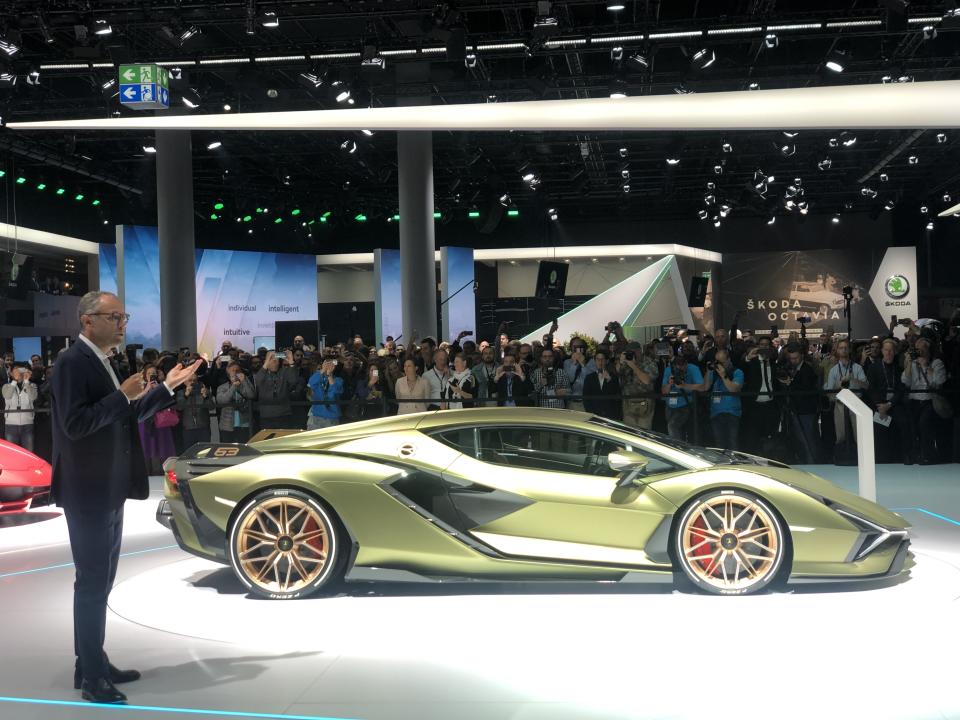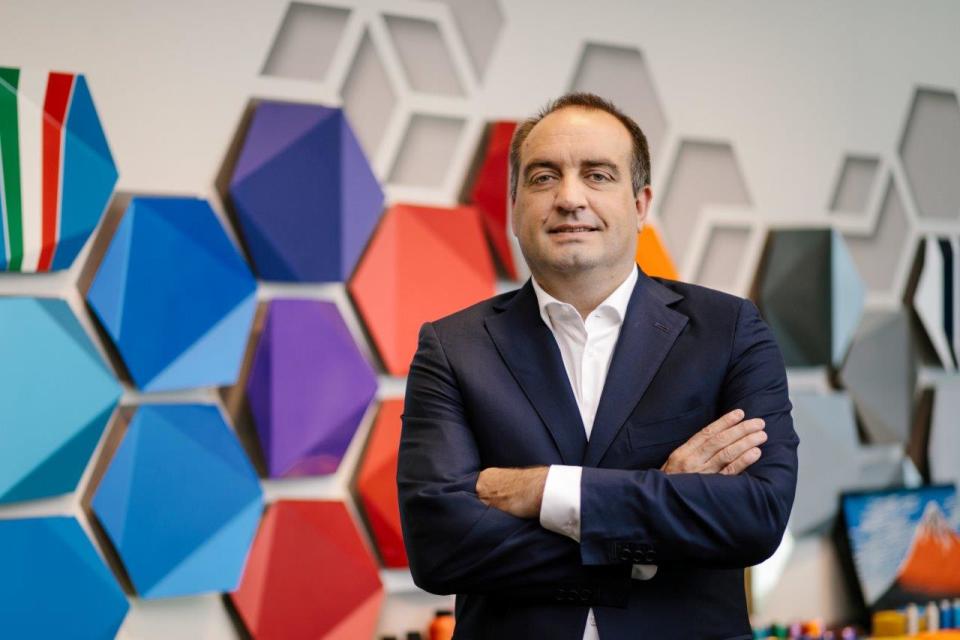Lamborghini unveils Sian as a 'step into hybrid hypercar future'

Lamborghini revealed its first hybrid hypercar the Sian on Tuesday, which it called “the first step in its route to electrification.”
The Volkswagen-owned Italian brand said the Sian, which means “flash” or “lighting” in Bolognese dialect, is the fastest Lamborghini of all time. It harnesses a V12 engine and a supercapacitor — an advanced energy storage system that is more powerful and lighter than lithium-ion batteries — to produce a combined 819 horsepower (602 kW) and hit a top speed of over 350 km/h (217 mph).
Only 63 of them will be built, they cost €2.5m (£2.2m) each — and they are all already sold. Lamborghini chief commercial officer Federico Foschini told Yahoo Finance UK that they were the first brand to make exclusive, limited edition cars, and bring one out every four or five years.
“Yes, it is part of our business model, not only for the revenue — for sure these are cars with a very high price and that is helping our revenue — but it is a way to experiment,” Foschini says. “It’s a way for us to really innovate and try new design criteria and new technology innovations.”
Foschini says that we could see Sian’s hybrid tech in future production models from Lamborghini, and “it is not a mystery anymore” that they are working on a new generation of the Aventador and Huracan with the idea of having hybrid versions.
Volkswagen Group, which owns Lamborghini, is on a major push at the Frankfurt car show this week to show its green credentials and the new hybrid and electric cars it plans to launch across its brands. However, Lamborghini is not under the same pressure as the rest to give up on the internal combustion engine entirely.
“The volume we are producing yearly can be considered big for Lamborghini, but it’s very niche of the niche of the niche,” Foschini says. “Our influence on the pollution is really very small, considering not only the number of cars but also the users profile — owners of Aventadors don’t do more than 5,000-8,000km per year.”

While beautifully bonkers-looking supercars are Lamborghini’s reason to be, it is the Urus SUV that is by far its biggest commercial success. The Bolognese carmaker delivered 2,693 units of the “world’s fastest SUV” in the first six months of the year, versus 1,211 Huracans and 649 Aventadors, all together setting a new six-months sales record.
The US is Lamborghini’s biggest market, not just because of its sheer size, but because perception of the brand has become more positive in the last 10-15 years.
“For sure the Urus is helping us, it is a more inclusive product and increases the reach of the brand.”
Luxury is about rarity however, according to Foschini, and selling its 8,000 units a year is the most they want to sell at the moment, unless they would add a fourth model in the future.
“You need to preserve the offer to demand ratio. Luxury is not made by an excess of product on the market.”

 Yahoo Finance
Yahoo Finance 